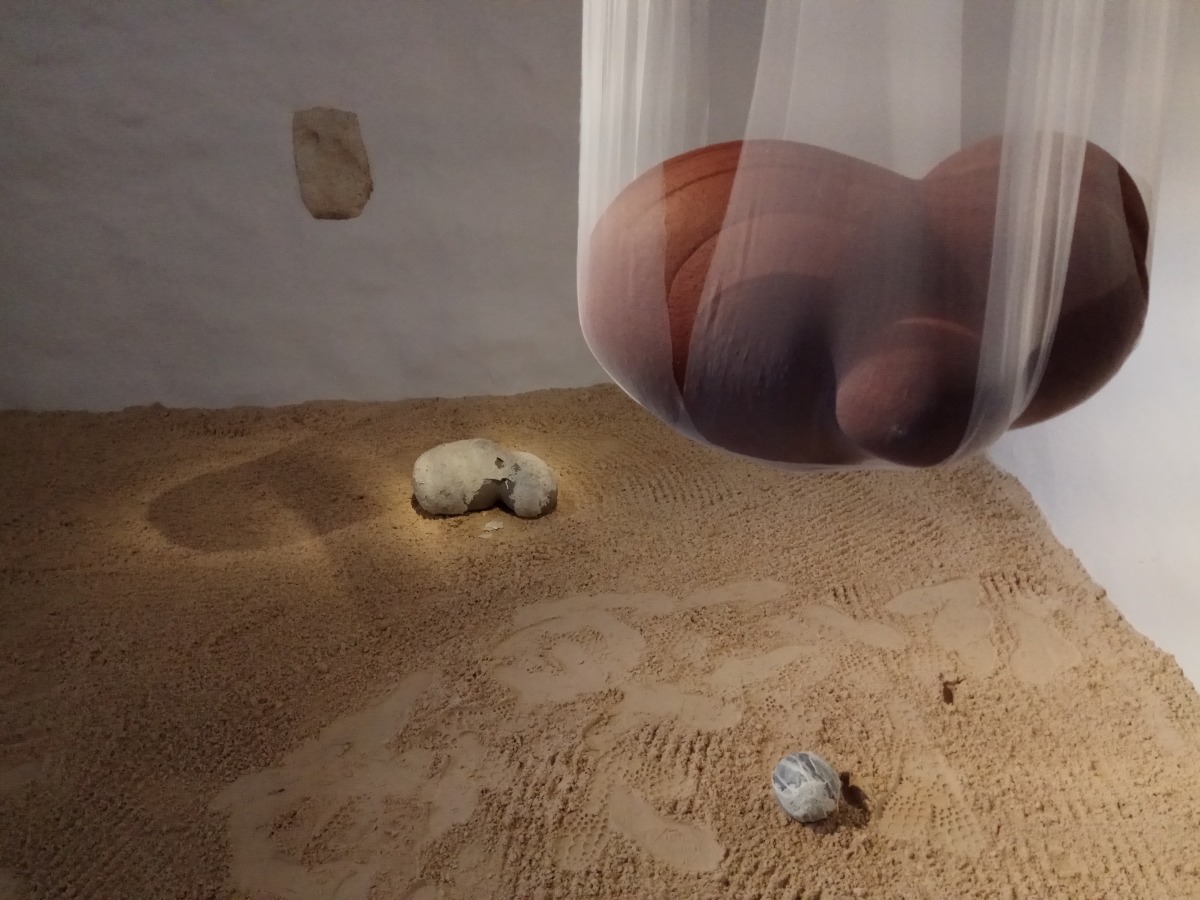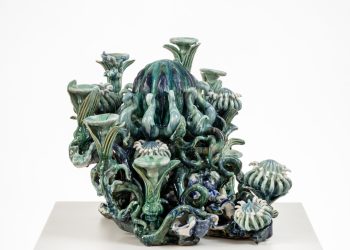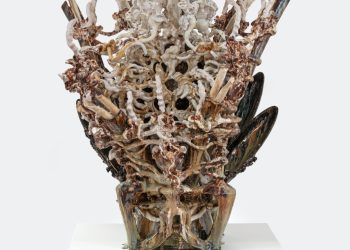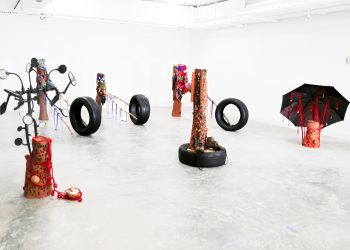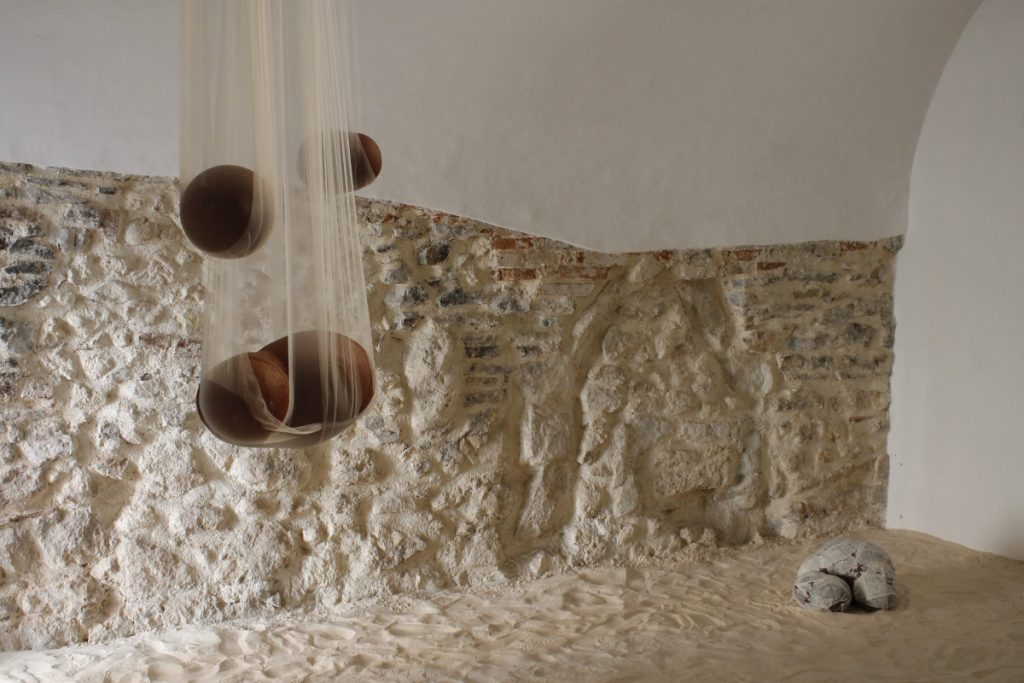
On the Origin of Species – First room installation 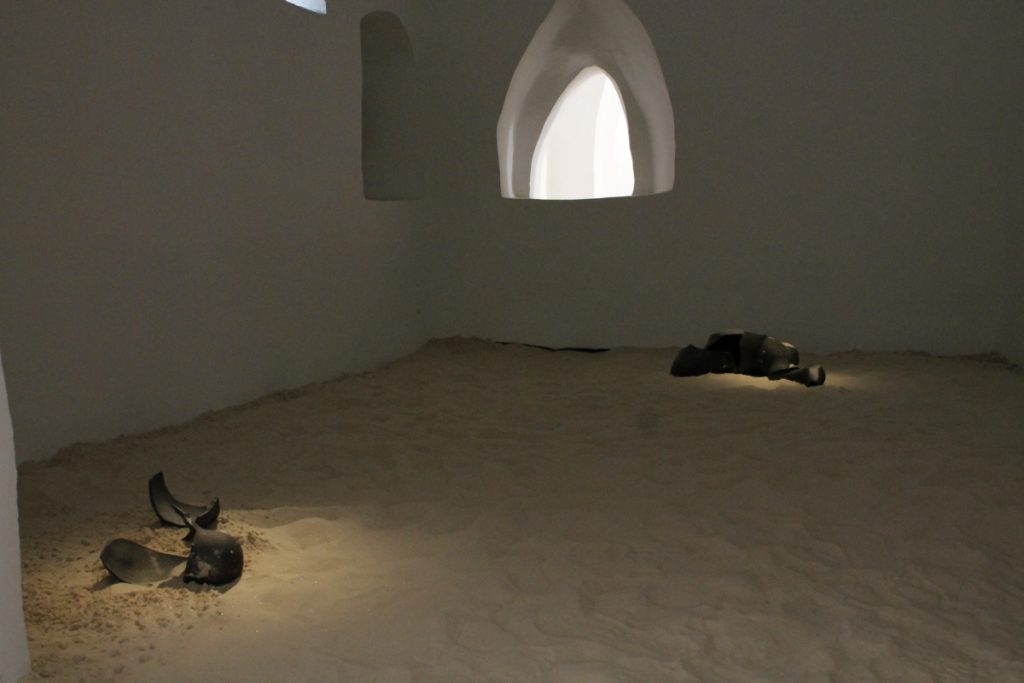
On the Origin of Species – Fourth room installation 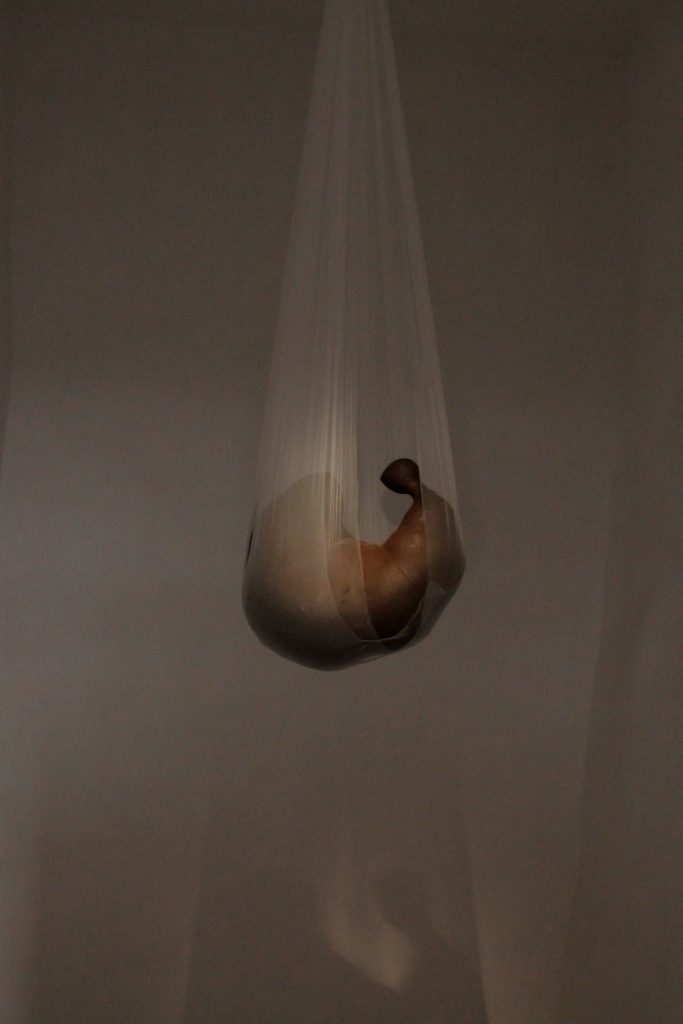
On the Origin of Species – Second room installation 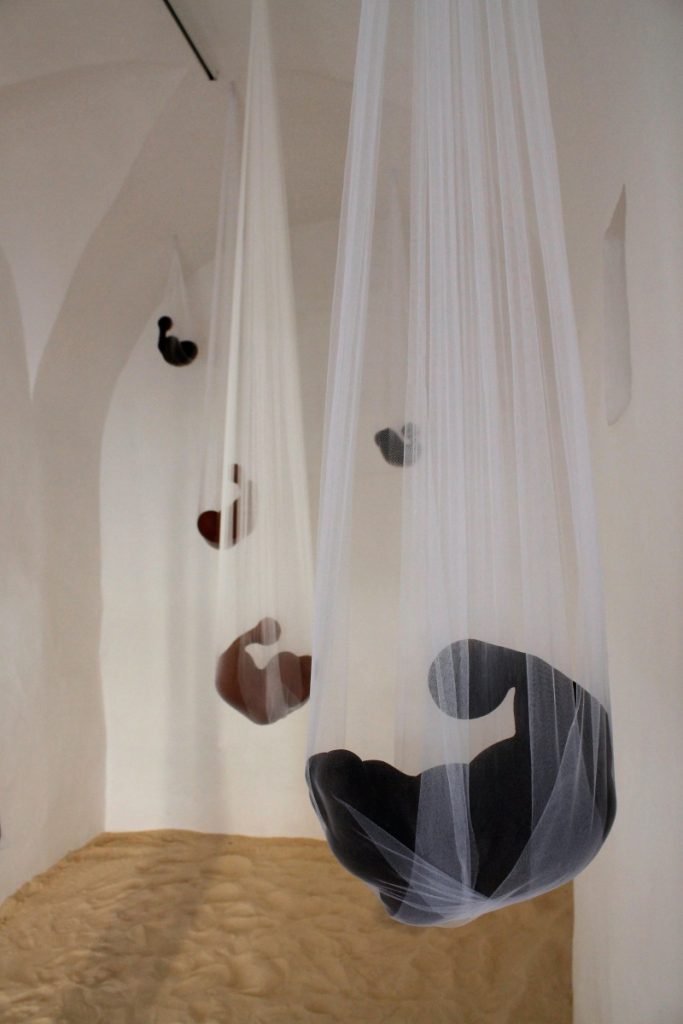
On the Origin of Species – Second room installation 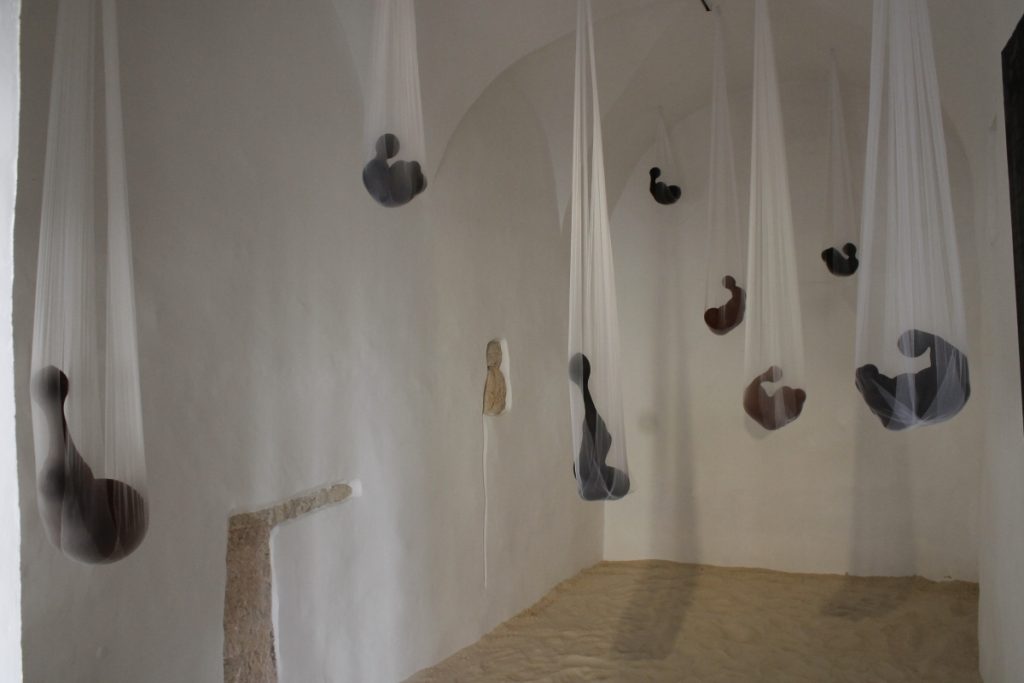
On the Origin of Species – Second room installation 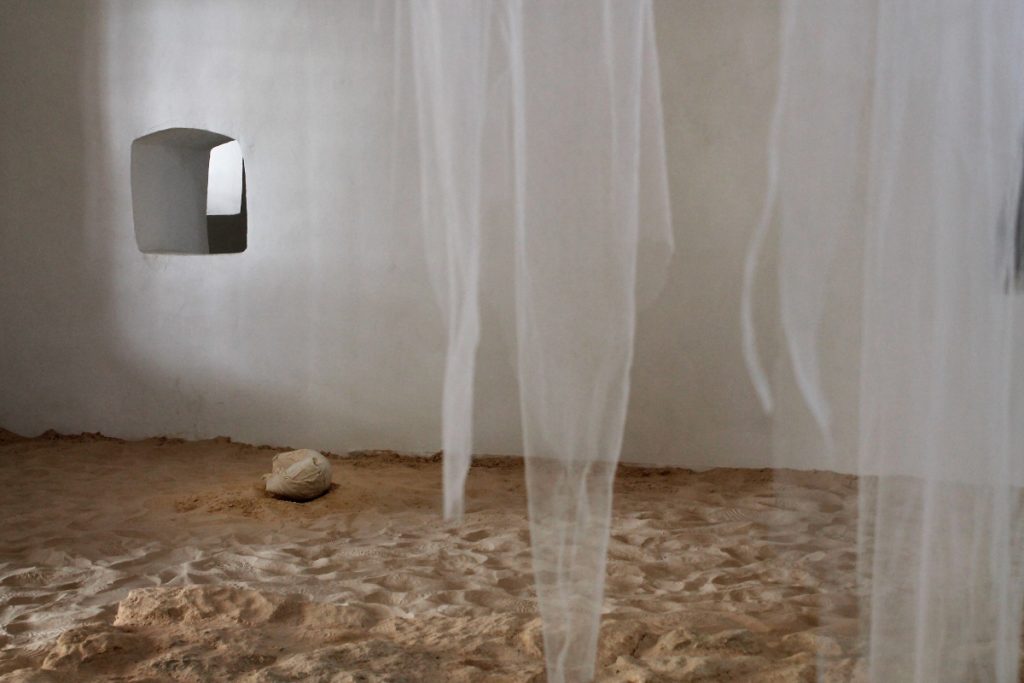
On the Origin of Species – Third room installation
Kristina Rutar: On the Origin of Species, 2018
The site-specific exhibition On the Origin of Species was set in Galerija Božidar Jakac – Lapidarij, which consists of 4 separate rooms, or as I understood them, cells. Some of the cells lead to other, smaller rooms, some spaces are even connected with small windows. The cells are a self-sufficient ecosystem which reflects a certain stage of growth and development. All of the rooms were covered in sand, offering a warm and soft step.
The first room depicted embryos, the first forms of cells of different species. The forms are relatable, as they are in real nature – the embryo forms of different species are very similar to each other in its first phases. It shows that we all have the same beginning we share. The forms are protected in the veils they hang in. They are fragile, isolated, and still in the first signs of life.
The second room depicted embryos in growth – the form develops as it does in nature – the cells divide, they multiply into a growing and more defined outline. There are less sculptures than in first one – the nature’s selection is ruthless and only »the best« survive.
The third room depicted empty nests. The ending is open, as is open our future. All the living species are in a constant never-ending development, which is unseen to us, because it takes hundreds and thousands of years to be noticed. We are constantly adapting to new environmental and social issues, to ensure and provide the survival of our genes. The empty spaces are open to different possible interpretations.
The fourth room was a social comment on the topic of the natural selection and a tribute to those, who and which do not survive. In the last room I searched for metaphoric connections between the survival of the fittest and modern society. The Darwin’s Theory of Evolution is still present, but not only in physical form, but also the social one. The space of exhibition was dark, with soft light hitting the shreds of decaying forms. I understand the shreds, the fragments of an old sculpture as a new formation, a new sculpture, which tells a lifelong story of survival.
Photos courtesy of the artist


